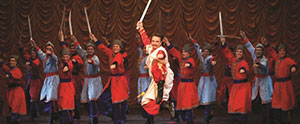Sociology / SOCY-101 Syllabus
Sociology / SOCY 101
Writing-Intensive Syllabus
Prof. Donald Tricarico, PhD
CUNY/Queensborough
Course Description: Introductory analysis and description of structure and dynamics of human society; special emphasis on application of scientific methods of observation and analysis of social groups, intergroup relations, social change, social stratification and social institutions.
PATHWAYS LEARNING OUTCOMES II .D. INDIVIDUAL AND SOCIETY
Students will learn to gather, interpret, and assess information from a variety of sources and points of view.
Students will learn to evaluate evidence and arguments critically and analytically.
Students will learn to produce well-reasoned written or oral arguments using evidence to support conclusions.
Students will learn to identify and apply the fundamental concepts and methods of a field exploring the relationship between the individual and society.
Students will learn to examine how an individual's place in society affects experiences, values, or choices.
Students will learn to identify and engage with local, national, or global trends or ideologies, and analyze their impact on individual or collective decision-making.
INDIVIDUAL COURSE OBJECTIVES
Upon completion of an introductory Sociology class, students will be expected to be able to:
• demonstrate familiarity with classical and/or contemporary social theory;
• demonstrate an understanding about how social structure affects individual life chances;
• identify and apply major paradigms of sociological analysis;
• describe the principles of social research methodologies;
• identify significant sub-discipline areas of study including, but not limited to the topics covered by social institutions and social inequality;
• apply “the sociological imagination” to contemporary social phenomena and social problems;
• explain the processes of socialization and adult re-socialization; and
• discuss the concepts of normative and deviant behaviors.
• develop writing skills and critical thinking skills appropriate for study at the college level.
Methods of Instruction
The course utilizes a mix of instructional strategies. Lectures are geared to 4 research projects (see “Project Guide”). The projects are sociological excursions into the everyday social world, case studies that involve the collection and analysis of empirical data (see accompanying handout).
An assigned book contained readings that complements the lectures: The Norton Mix: Sociology Reader which I have edited (Norton, 2016). The book is a collection of readings that has been customized for this course; it is assigned to enhance comprehension of the material presented in class. It is sold by the college bookstore and there are four copies on reserve in the QCC library.
In addition to the required reader, I recommend an online text as a reference: OpenStax Introduction to Sociology 2e https://openstaxcollege.org/textbooks/introduction-to-sociology-2e There is also a list of recommended readings that can be found online.
Lectures and class discussion generate important information which should be used to write papers. This means that students should take representative notes in class. Note taking creates a student text that trains you to organize ideas in a personal way. Class notes are not available online because writing (in longhand) is integral to how learning happens. This is an important feature of a writing-intensive curriculum.
Writing-intensive classes also provide for the revision of a first draft. This will be presented in class, constituting a more advanced level of instruction. Constructive in-class feedback is intended to guide revisions of the first draft. A completed second draft is to be submitted within one week of in-class presentations.
Regular class meetings are in M126 which is a “Smart Room” equipped with Internet capability. There is no role in the class discussion for personal technology, especially phones and texting which connect you to a conversation outside of class. Instead, I invite you to consider class meetings as an opportunity to reclaim the “here and now” (see Andrew Sullivan, “I Used to Be a Human Being”, New York Magazine, 9.18.16).
Course Grade
- A course grade is determined by computing an average of grades assigned to research projects (presentations and written reports). There will be 4 research projects required for completion of the course.
- Contributions to class discussion – defined as enhancing the group learning experience - are factored into the final grade (20%). This is based on the 4 in-class presentations of a first draft. A class grade is impacted by behavioral disruptions of the classroom conversation such as persistent lateness and the extraneous use of personal technology (cell phones, iPods, laptops, etc.) which is a distraction that serves an agenda outside this class. A class participation grade reflects respect for fellow students and for the fundamental class project: furthering objective knowledge about a subject that often evokes strong emotions. Because you have to be in class to participate, attendance has an impact on this grade.
- Projects must be completed in a timely fashion; this refers both to in-class presentations and written submissions. Students are encouraged to conference with me if additional time is necessary. Irresponsibility results in grading penalties.
- Course grades conform to the college’s grading schedule (see QCC Catalogue or Student Handbook).
- It is your responsibility not only to submit papers on time but to collect papers in a timely manner and to keep track of the grades that you earn. The grade earned for the course should not come as a surprise. I am available for a grade review during regular office hours.
Guide for Writing Papers:
- A first draft will be presented in class and becomes the basis for a paper that incorporates revisions.
- Submissions are due within one week of class presentations.
- Papers should be a minimum of 2 typed pages in length for writing-intensive courses that require a minimum of 10 pages for the term.
- Papers are graded for critical sociological thinking as well as descriptive detail.
- Class notes (from lecture presentations) and required readings must be incorporated for a maximum grade.
Attendance Policy
The college attendance policy is in force, permitting absences that are equivalent to 6 hours of class time (e.g., four I hour and 15 minute class meetings). A written explanation is required for excess absences. Persistent lateness must be remedied. Attendance issues also impact on the class participation grade.
ACCOMMODATIONS FOR STUDENTS WITH DISABILITIES:
As stated in the current college catalog, any student who needs specific accommodations based upon the impact of a disability should register with the office of Services for Students with Disabilities (SSD) to be eligible for accommodations which are determined on an individual basis. The SSD office is located in the Science Building, room S132 (718-631-6257). Students should also contact their instructor privately to discuss their specific needs.
ACADEMIC INTEGRITY POLICY
The Department of Social Sciences Academic Integrity Policy adheres to the standards described in the Academic Integrity Policy of Queensborough Community College. Within the framework of the college policy sanctions for violations of academic integrity are left to the discretion of the instructor. Students may appeal sanctions to the department chair who will refer the appeal to a departmental Committee on Academic Integrity for review.
Contact
Relevant questions or comments are welcome at any time during class. I encourage you to visit my office for matters that pertain to the course. Email is preferred to office telephone.
Office: M121, Hours TBA
Email Address: Dtricarico@qcc.cuny.edu
TOPIC OUTLINE [With Readings]
TOPIC OUTLINE [With Readings]
1 The Subject Matter of Sociology
- Defining the “social”: social structures and social interaction
- Social life is patterned; social institutions
- Finding “the general in the particular”
- The group and the individual
- The sociological approach (as science)
READ: Berger, Mills, Wright et al., Becker, Risman, Tricarico
Openstax, Chapters 1 and 2
Sociologists and the News: “The Trials of Alice Goffman”, G. Lewis-Kraus, NYT Magazine (1.12.16); “Studying Families Shattered by Eviction”, J. Schuessler, NYT (2.23.16); “Giving the Sexual Culture on Campus a Failing Grade”, Jennifer Senior, NYT (1.19.17); “First Tinder, Then Marriage?”, Sophia Kercher, NYT (4.20.17); “Italian Americans and the G Word: Embrace or Reject”, Caryn Brooks, Time, (12.14.09).
“Ways to Track Personal Habits and Identify Patterns”, Kit Eaton, NYT (1.21.16); “A “Generationally Perpetuated’ Pattern: Daughters Do More Chores”, Claire Cain Miller, NYT (8.8.2018); “The Age That Women Have Babies”, Q. Buri and C.C. Miller, NYT (8.4.2018); “The Juul is Too Cool”, Amos Barshad, NYT (4.8.18); “C.D.C. Survey Takes Stock of the Lives of Teenagers”, Jan Hoffman, NYT (6.15.18); “Have Smartphones Destroyed a Generation?”, Jean M. Tweng, The Atlantic (accessed 9.3.17);“Why We Can’t Look Away From Screens”, Claudia Dreifus, NYT (3.7.17); “The Power of Two”, J.W. Shenk, The Atlantic (6.25.14).
Video: “Quantified Self; Apps to Help Track Habits and Identify Patterns”, Kit Eaton (NYT Video, 1.20.16); “The Amish in Ohio” (YouTube).
2 Culture, Society, and Socialization
- Culture is the total way of life of a society
- Transmitting culture from one generation to another
- Biological capabilities and limitations of human beings
- Agents of socialization
- Secondary socialization: encroachment and conflict
- Age norms in modern society
- Self as social construct
READ: Becker, Lareau, Anderson, Tricarico, Kozol, Mintz, Wright et al., E.Goffman
OpenStax, Chapters 3 and 5
“The American Obsession with Parenting”, A. Wong, The Atlantic (12.12.16); “’Free-Range’ Parenting’s Unfair Double Standard”, Jessica McCrory Calarco, NYT (4.3.18); “Homework Bans Don’t Work for All Homes, Parents Say”, Kyle Spencer, NYT (4.26.17); “In Sweden’s Preschools, Boys Learn to Dance and Girls Learn to Yell”, Ellen Barry, NYT (3.23.18); Shapiro, Eliza. “’I Love My Skin!’ Black Parents Find Alternative to Integration”, NYT (1.8.19).“Four-Year Olds Don’t Act Like Trump”, Allison Gopnik, NYT (5.21.17); “A Movie Date with My Younger Self”, Mark Caro, NYT (3.26.17); “When Are You Really An Adult?”, J. Beck, The Atlantic (1.5.16); “What is it About 20-Somethings?” by Robin Henig (NYT, 8/18/10); “How Adulthood Happens”, D. Brooks, NYT (6.12.16); “When A Child Is Leading The World”, David Brooks, NYT (5.16.17); “Is Rock n’ Roll Dead, or Just Old?”, B. Flanagan, NYT (11.20.16); “It’s Legal for 14-Year Olds to Marry. Cuomo Disapproves”, L. Foderaro, NYT (3.14.17); “Adulting, But With Your College crowd”, Ronnie Koenig, NYT (3.26.17); “Why One Woman Pretended to Be a High School Cheerleader”, Jeff Maysh, The Atlantic (7.6.16); “69-Year-Old Dutchman Starts Legal Bid to Become 20 Years Younger”, Tara John, CNN, 11.8.18..
Video: “Generation Like” (Frontline, 2014); “Growing Up Online”/“Autumn Edows” (Frontline 2007).
3 Families
- A biological and a social institution
- Cross-cultural variation in marriage and family
- Mate selection and family formation
- Family change and new living arrangements
READ: Risman, McClintok, Amato et al., Anderson
OpenStax, Chapter 15
“First Tinder, Then Marriage?”, Sophia Kercher, NYT (4.20.17); “Dating Website Emphasizes Like, Rather Than Love”, NYT (11/07/14); “Turkey Acquits 2 Men in ‘Honor Killing’ of Their Sister That Shocked Berlin in 2005”, Patrick Kingsley, NYT (5.31.17); “Afghan Lovers’ Plight Shaking Up the Lives of Those Left in Their Wake” NYT (5/19/14); “Date Show Gives Reins to Parents in China”, K. Kan, NYT (2.20.17); Marriage is Valued but in Decline”, Claire Cain Miller (NYT 9/26/17); “The New Unmarried Moms” by Hymowitz, Wilcox and Kaye (Wall Street Journal, 3/15/13); “How Interracial Love is Saving America”, Sheryll Cashin, NYT (6.3.17); “Marriage is Valued but in Decline”, Claire Cain Miller (NYT 9/26/17); M. Wear, “The American Family is Making a Comeback”; http://www.theatlantic.com/politics/archive/2014/10/the-family-is-making-a-comeback/380956/3/
Video: “Let’s Get Married” (Frontline, 2002)
4 Stratification / American Social Class System
- Types of stratification systems
- Class and status: economic and social ranking (Max Weber)
- Hierarchies of wealth, power, and prestige
- Status and types of capital
- Class and culture: the significance of life-chances and life-styles
READ: Anderson, Lareau, Granfield, Tricarico
Open Stax, Chapters 9 and 11
“Class Matters” (NYT.com); “Family Budget Calculator”, www.EPI.com
“Are You in the American Middle Class? Find Out With Our Income Calculator” http://www.pewresearch.org/fact-tank/2016/05/11/are-you-in-the-american-middle-class/
“U.S. Middle Class Shrank in 20 Years, Study Finds”, Nelson Schwartz, NYT (4.25.17); Miller, C.C., “Class Divisions Grow Worse, From Cradle On”, NYT (12.18.15); “In An Age of Privilege, Not Everyone is in the Same Boat”, Nelson D. Schwartz, NYT (4.23.16); “Does ‘Wrong Mind-Set’ Lead to Poverty, or Does Poverty Come First?”, Emily Badger, NYT (5.31.17); “When Whites Get a Free Pass”, I. Ayres (NYT 2/15); “The Nature of Poverty”, D. Brooks, NYT (5/1/15); “The Hipster in the Mirror” by Mark Grief (NYT, 11/12/10); “’Jersey Shore’ Cast’s Guido Style Can Be Traced Back to ‘Saturday Night Fever’”, S. Roberts (NY Daily News, 7/28/10); “They Taught Hip Hop How to Dress”, J. Caramanica, NYT (6.30.16); “The Gospel of Minimalism”, Jacoba Urist, NYT (5.4.17); “Island of Prep Perseveres”, John Caramanica, NYT (1.11.18).
Video: “Ivy League Trailblazers”, N. Osipova, (NYT 4.12.15); You Talkin’ to Me?” (NYT); “A Nation of Tribes” (People Like Us”, #1/YouTube); “ “Joe Queenan’s Tour” (“People Like Us”, #2/YouTube); “Lo Lifes (Preview)” (Youtube).



